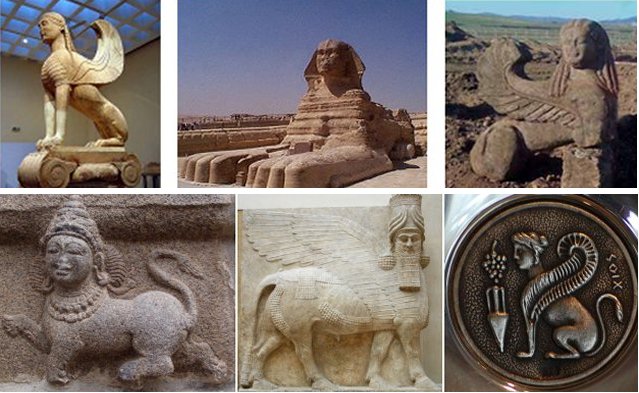Did The Great Sphinx Of Giza Have A Twin And Was It Destroyed By A Lightning Strike?
Ellen Lloyd - AncientPages.com - Few ancient structures have caused as much controversy as the Great Sphinx of Giza in Egypt. Scientists, archaeologists, and historians have debated its age, purpose, original appearance for a long time and the mysterious Egyptian structure raises more questions than answers.
Adding to all the unsolved puzzles, there is also a controversial theory that suggests the Sphinx of Giza once had a twin. If this is true, then what happened to the ‘second’ sphinx in Egypt? Where was it located, and how was it destroyed?
Did The Sphinx Have A “Twin Sister”?
The theory that the Great Sphinx of Giza may have had a twin was put forward by historians, Gerry Cannon and Malcolm Hutton.
Working with Egyptologist Bassam el-Shammaa, Cannon and Hutton are convinced there was once a second sphinx and think they have evidence to prove its existence.
The second sphinx was a female and the statue "disappeared" under unexplained circumstances. Cannon claims, however, that he managed to find the trail of the lost statue, analyzing the construction of the area around the pyramids.
Buried for thousands of years, the second sphinx is located on a second mound alongside the male sphinx, standing guard in front of one of the Great Pyramids.
The historians’ research pointed out that any sphinx had to have been carved out of natural rock long before sand covered the area. This means the statues must have been carved when the area had a much warmer and fertile climate. In ancient times, some thousand years ago, this vast area was fertile grassland.
Then something happened, and the Green Sahara turned into a desert.
Today, there is enough evidence to show that the Sahara desert was once a grassland ecosystem and was a much wetter place than it is today. The Great Sphinx and its companion must have been built during this time.
“The Sphinx had to have been carved when there was no sand there. You can’t carve a rock when it’s under sand. When it was not under sand was about 12,000 years ago and the Egyptians weren’t there,” Cannon said.
There are two sphinxes on the Dream Stele.
Another piece of evidence that speaks in favor of the second sphinx theory is the Dream Stele or Sphinx Stela from the time of Pharaoh Tuthmosis IV. Two sphinxes are clearly depicted on the Dream Stele.
Did A Lightning Strike Destroy The Second Sphinx?
El Shammaa has investigated images taken by NASA’s Endeavor Satellite. He thinks there is an underground anomaly near the great Sphinx, and those are the remains of the twin.
What destroyed the second sphinx is unknown, but El Shammaa speculated it could have been lightning.
Most Egyptologists Are Uninterested In The Second Sphinx Theory
Cannon and Hutton have many who support their second sphinx theory, but there is also great opposition among Egyptologists who think the idea is far-fetched.
In 2003, Cannot contacted Zahi Hawass, Egyptian archaeologist and former Minister of State for Antiquities Affairs and asked him to confirm his assumptions.
According to Cannon, Hawass's reply was simple and negative. Hawass stated he had no intentions co-operating with Cannon since he only worked with and assisted serious, respectable institutions.
The Sphinx - Important Symbol To Many Ancient Civilizations
The theory that there was once a second sphinx at Giza is not so crazy at all. Archaeological discoveries offer evidence that sphinxes do come in pairs. Without an open-minded approach, we can never solve the riddle of the twin sphinx. At present, the possible existence of a second unknown sphinx remains an unsolved ancient mystery.
We tend to associate the sphinx with Egypt, but this intriguing creature was well-known in many other ancient places. Ancient civilizations considered the sphinx to be a guardian of knowledge and symbol of riddles and intrigue.
Our member section offers a wealth of informative and insightful articles similar to this one. Upgrading to a premium membership gives you ad-free access to our entire collection of articles, allowing you to explore and enjoy our content without interruptions.
Written by Ellen Lloyd - AncientPages.com
Updated on July 1, 2024
Copyright © AncientPages.com All rights reserved. This material may not be published, broadcast, rewritten or redistributed in whole or part without the express written permission of AncientPages.com
More From Ancient Pages
-
 Gallic Leader Vercingetorix In Victorious Battle Of Gergovia, 52 BC
Featured Stories | Jan 23, 2017
Gallic Leader Vercingetorix In Victorious Battle Of Gergovia, 52 BC
Featured Stories | Jan 23, 2017 -
 Traces Of A 9,000-Year-Old Lost Unknown Civilization Discovered In Lake Huron, Michigan
Civilizations | Aug 11, 2014
Traces Of A 9,000-Year-Old Lost Unknown Civilization Discovered In Lake Huron, Michigan
Civilizations | Aug 11, 2014 -
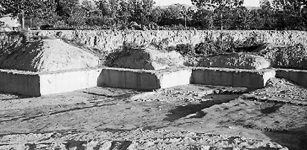 China’s 4,200-Year-Old Taosi Ruins Confirmed As Ancient Capital Of Legendary Emperor Yao
Civilizations | Sep 12, 2015
China’s 4,200-Year-Old Taosi Ruins Confirmed As Ancient Capital Of Legendary Emperor Yao
Civilizations | Sep 12, 2015 -
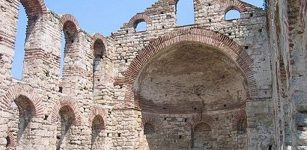 Ancient Nessebar – 3,000-Year-Old History Of Many Civilizations
Featured Stories | Jan 10, 2016
Ancient Nessebar – 3,000-Year-Old History Of Many Civilizations
Featured Stories | Jan 10, 2016 -
 Discovery At Fujiwarakyu Palace Complex Offers Better Glimpse Of 7th-Century Japan
Archaeology | Oct 21, 2015
Discovery At Fujiwarakyu Palace Complex Offers Better Glimpse Of 7th-Century Japan
Archaeology | Oct 21, 2015 -
 400-Year-Old Shipwreck Found Off The Coast Of Portugal Labeled ‘Discovery Of A Decade’
Archaeology | Sep 26, 2018
400-Year-Old Shipwreck Found Off The Coast Of Portugal Labeled ‘Discovery Of A Decade’
Archaeology | Sep 26, 2018 -
 Seven New Ancient Buddhist Caves – One With ‘A Harmika’ – Discovered In Mumbai
News | Jan 19, 2016
Seven New Ancient Buddhist Caves – One With ‘A Harmika’ – Discovered In Mumbai
News | Jan 19, 2016 -
 Ancient Mexicans’ Precise Solar Observations Fed Millions – Remarkable Farming Calendar Invented
Archaeoastronomy | Dec 12, 2022
Ancient Mexicans’ Precise Solar Observations Fed Millions – Remarkable Farming Calendar Invented
Archaeoastronomy | Dec 12, 2022 -
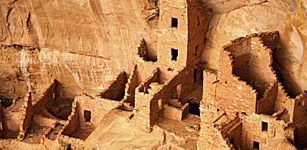 The ‘Anasazi’ Mystery: Sophisticated Civilization That Disappeared
Civilizations | Sep 20, 2015
The ‘Anasazi’ Mystery: Sophisticated Civilization That Disappeared
Civilizations | Sep 20, 2015 -
 Callanish Stone Complex: Sacred Place On The Isle Of Lewis In Scotland
Civilizations | Nov 26, 2018
Callanish Stone Complex: Sacred Place On The Isle Of Lewis In Scotland
Civilizations | Nov 26, 2018 -
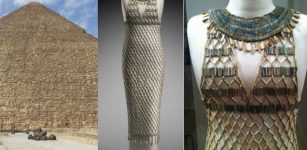 Amazing 4,500-Year-Old Egyptian Bead-Net Dress Found In Giza Tomb Restored
Featured Stories | Jun 27, 2023
Amazing 4,500-Year-Old Egyptian Bead-Net Dress Found In Giza Tomb Restored
Featured Stories | Jun 27, 2023 -
 Smuggled 1,800-Year-Old Lydian Atonement Inscription Sent Back To Turkey By Italy
Artifacts | Sep 28, 2020
Smuggled 1,800-Year-Old Lydian Atonement Inscription Sent Back To Turkey By Italy
Artifacts | Sep 28, 2020 -
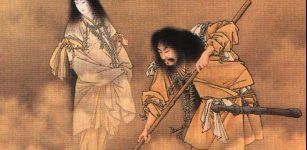 Yomi – Kingdom Of The Dead In Japan’s Native Shinto Religion
Featured Stories | Jun 7, 2021
Yomi – Kingdom Of The Dead In Japan’s Native Shinto Religion
Featured Stories | Jun 7, 2021 -
 A Stone Age Child Buried With Bird Feathers, Plant Fibers And Fur Investigated In Finland
Archaeology | Nov 2, 2022
A Stone Age Child Buried With Bird Feathers, Plant Fibers And Fur Investigated In Finland
Archaeology | Nov 2, 2022 -
 Courageous Elizabeth Freeman – First African American Slave Who Filed A Freedom Suit
Featured Stories | Oct 24, 2018
Courageous Elizabeth Freeman – First African American Slave Who Filed A Freedom Suit
Featured Stories | Oct 24, 2018 -
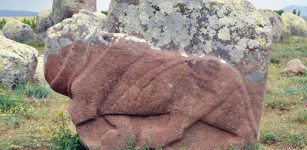 Mystery Of Gigantic Lion Sculptures Dated To The Hittite Era
Archaeology | Apr 14, 2016
Mystery Of Gigantic Lion Sculptures Dated To The Hittite Era
Archaeology | Apr 14, 2016 -
 Controversial Unexplained Ancient Mystery In Mongolia – Horrifying Sight – Part 2
Ancient Mysteries | May 2, 2018
Controversial Unexplained Ancient Mystery In Mongolia – Horrifying Sight – Part 2
Ancient Mysteries | May 2, 2018 -
 Frightening Fenrir That Killed God Odin And Delivered Chaos And Destruction In Ragnarok’s Final Battle
Featured Stories | Jun 6, 2016
Frightening Fenrir That Killed God Odin And Delivered Chaos And Destruction In Ragnarok’s Final Battle
Featured Stories | Jun 6, 2016 -
 Was The Discovery Of Biblical Abel’s Giant Grave In Syria Covered-Up?
Ancient Mysteries | Oct 28, 2014
Was The Discovery Of Biblical Abel’s Giant Grave In Syria Covered-Up?
Ancient Mysteries | Oct 28, 2014 -
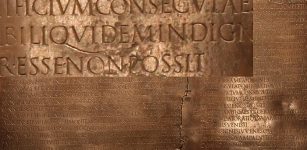 Roman Square Capitals: Prestigious Script That Delighted Human Eye With Its Elegance
Featured Stories | Sep 16, 2019
Roman Square Capitals: Prestigious Script That Delighted Human Eye With Its Elegance
Featured Stories | Sep 16, 2019



